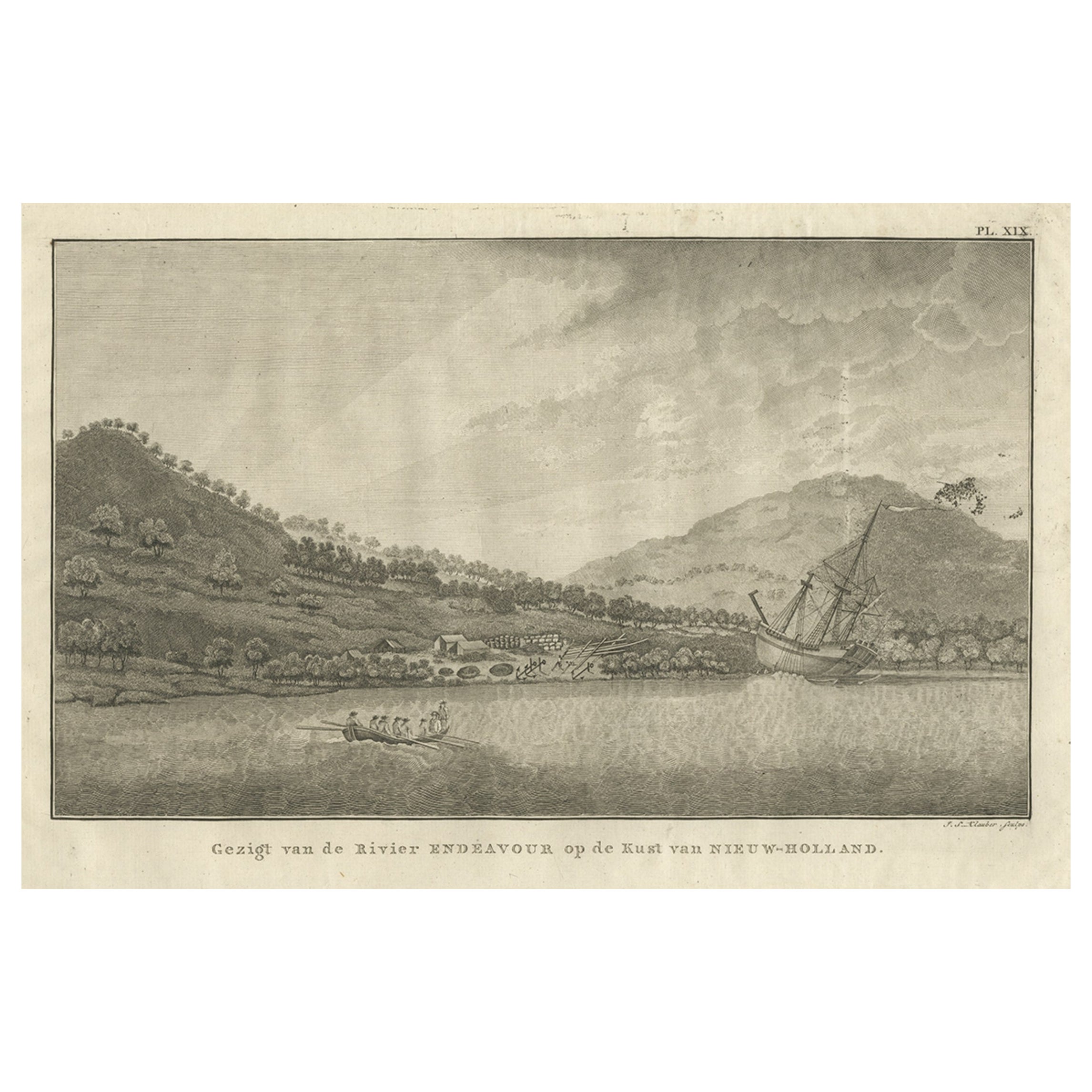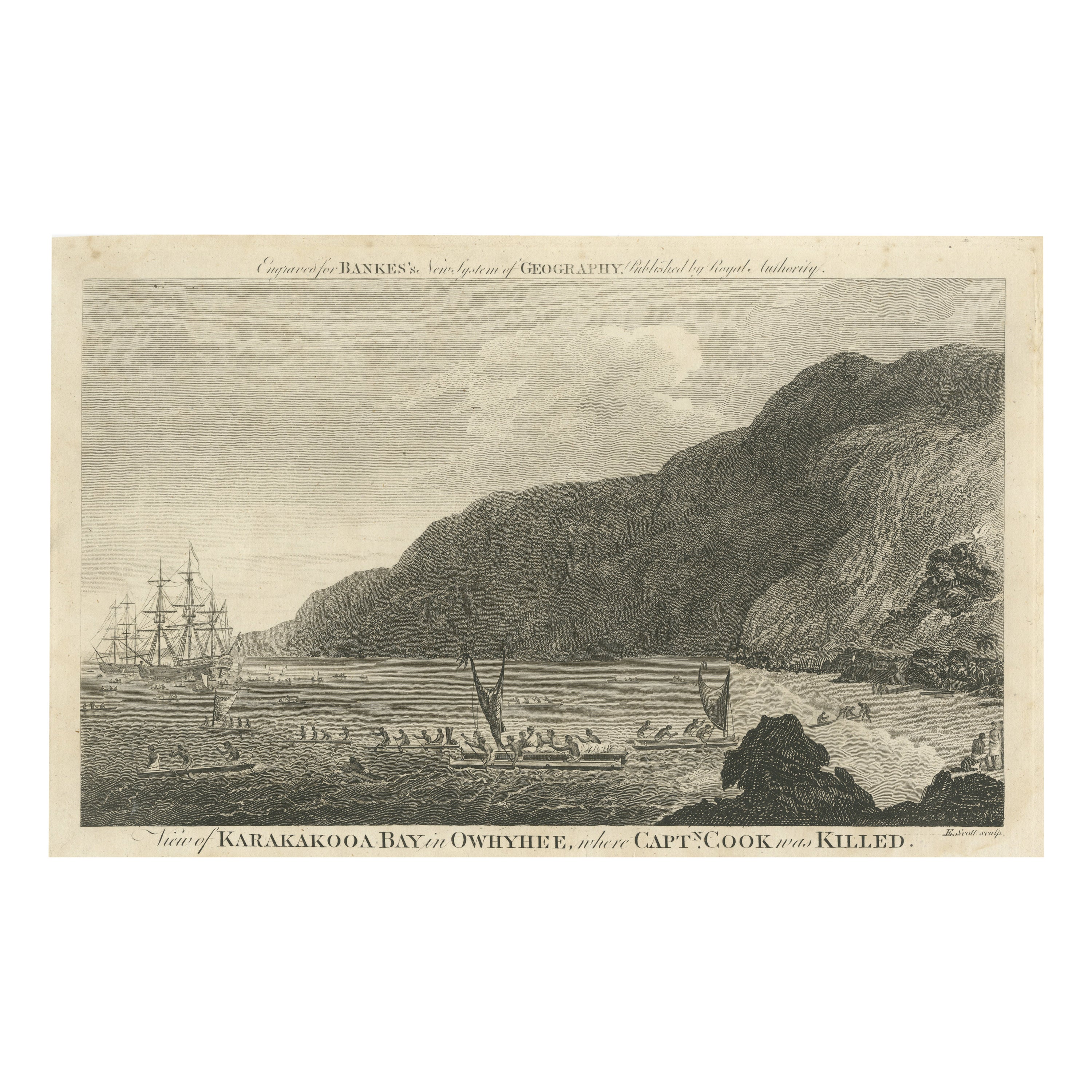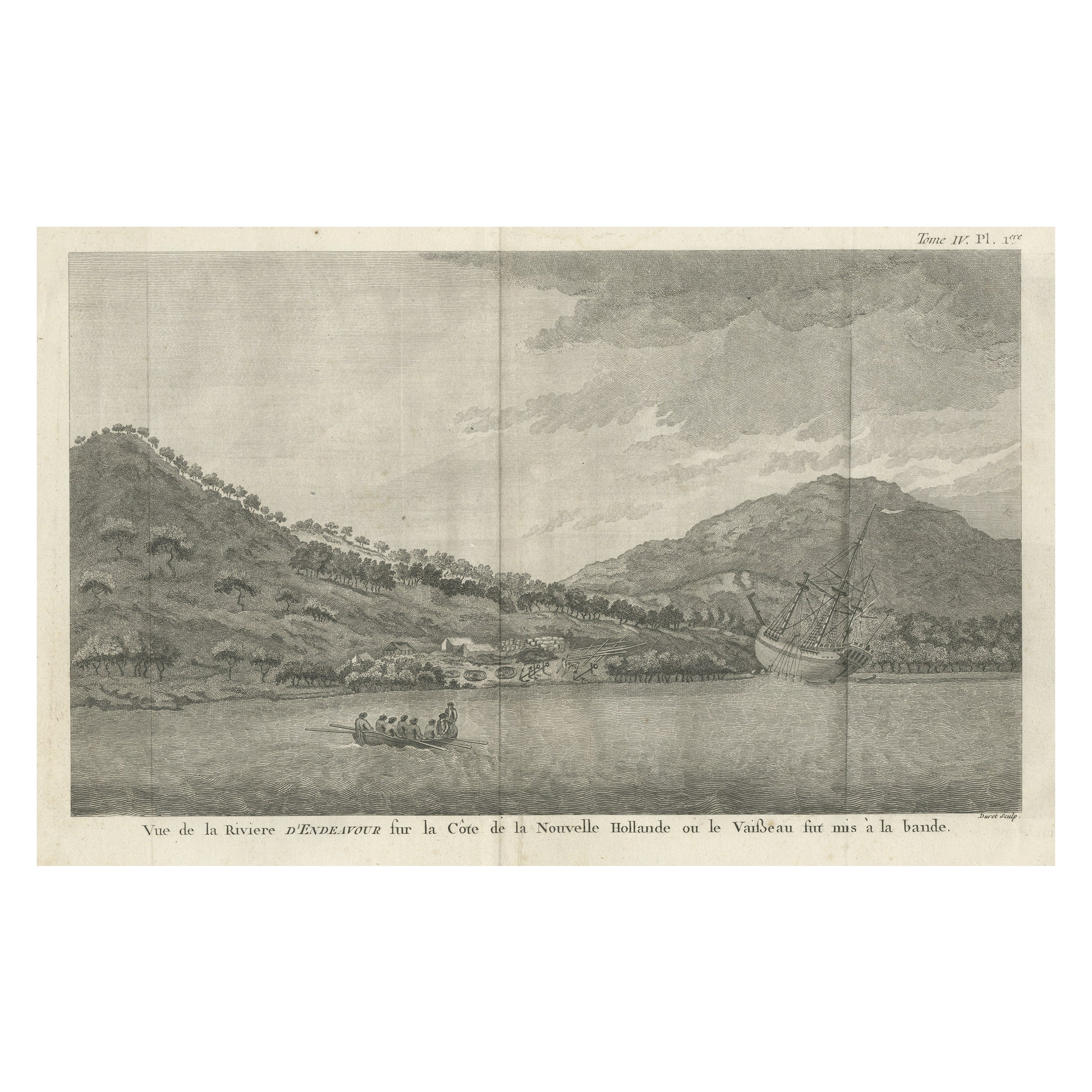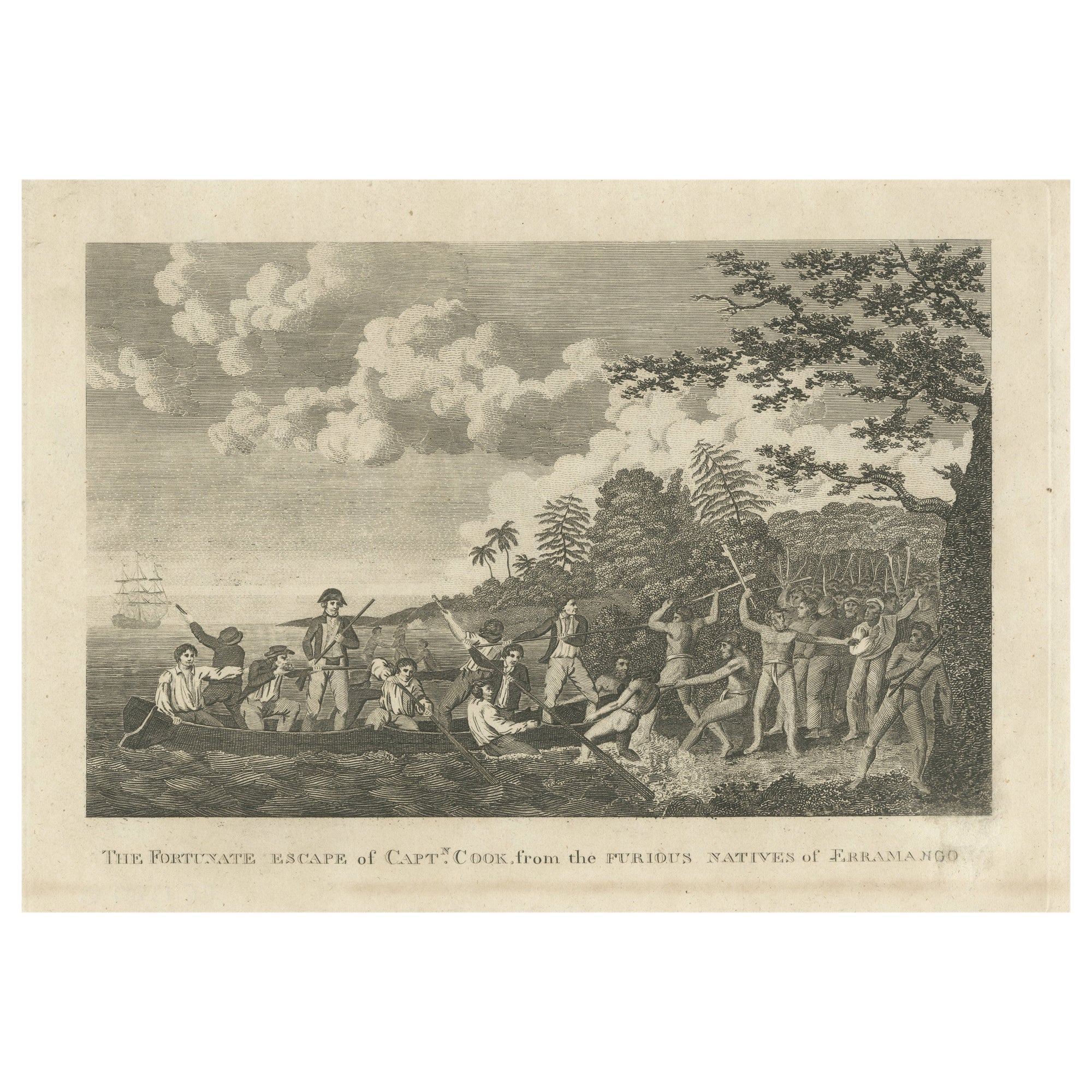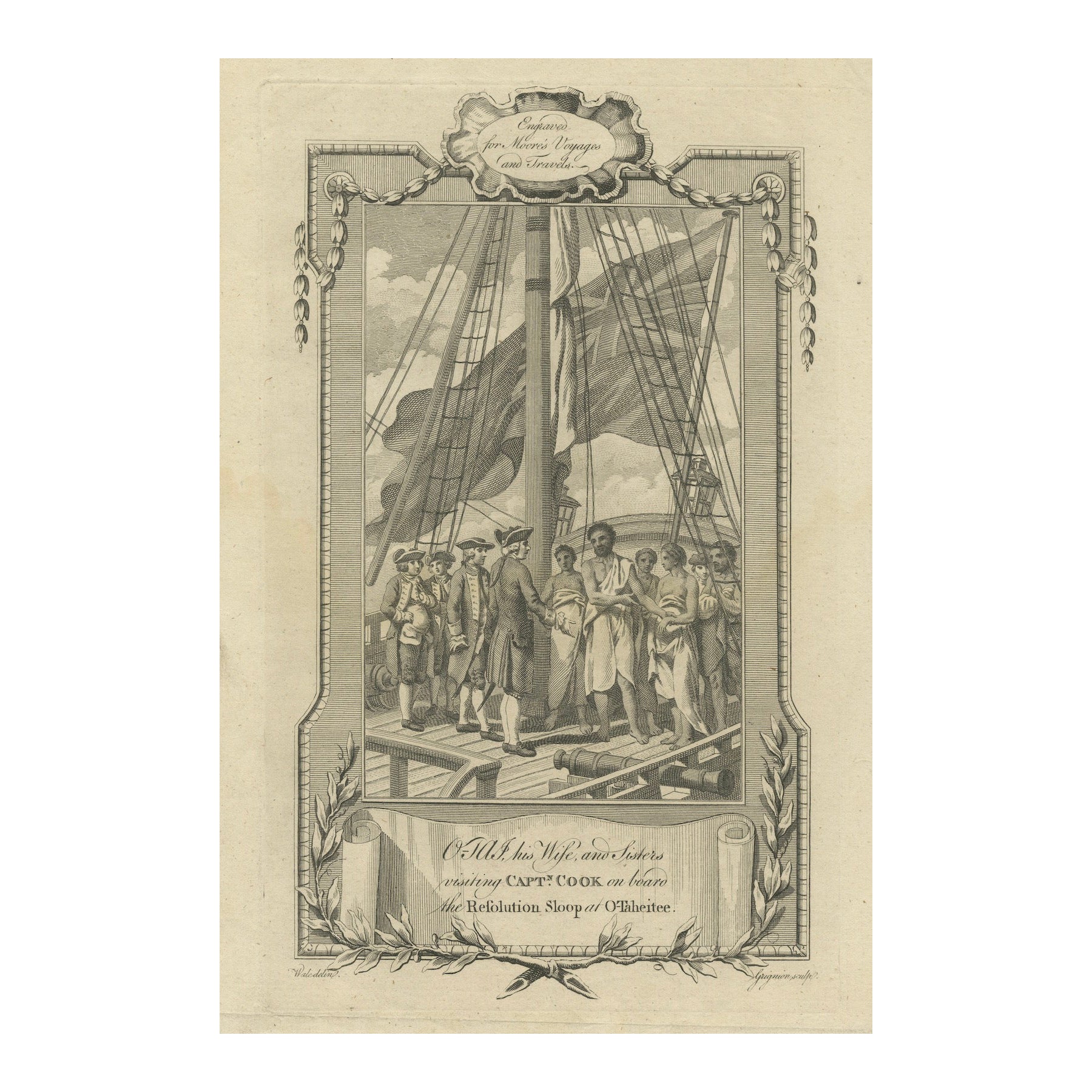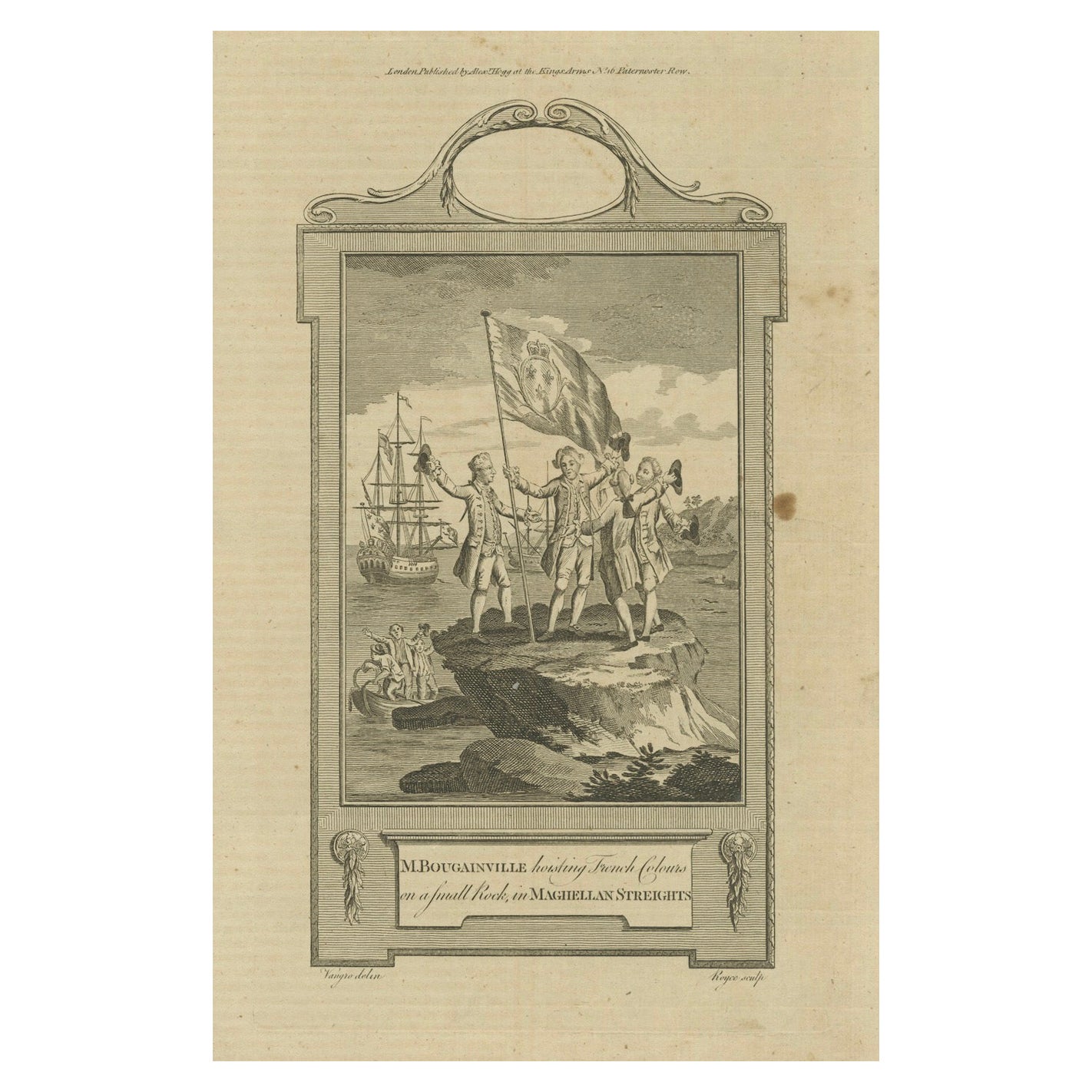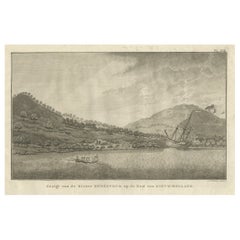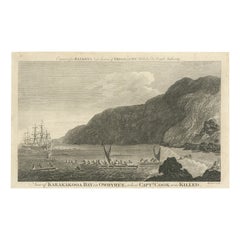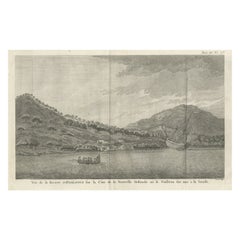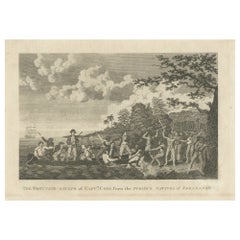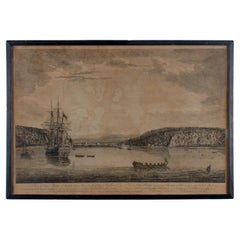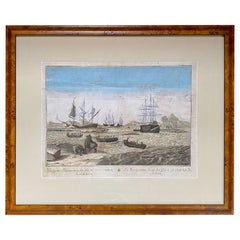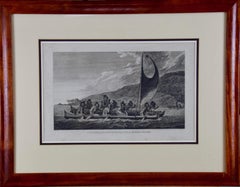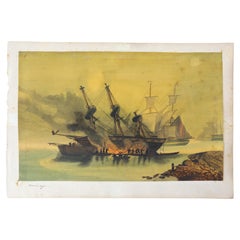Items Similar to Repairing the Endeavour: Captain Cook's Maritime Ordeal at Hope Islands, ca.1770
Want more images or videos?
Request additional images or videos from the seller
1 of 6
Repairing the Endeavour: Captain Cook's Maritime Ordeal at Hope Islands, ca.1770
$345.36
$431.7020% Off
£256.92
£321.1420% Off
€288
€36020% Off
CA$472.92
CA$591.1520% Off
A$525.82
A$657.2820% Off
CHF 274.56
CHF 343.2020% Off
MX$6,400.55
MX$8,000.6920% Off
NOK 3,503.22
NOK 4,379.0220% Off
SEK 3,282.35
SEK 4,102.9320% Off
DKK 2,192.38
DKK 2,740.4820% Off
Shipping
Retrieving quote...The 1stDibs Promise:
Authenticity Guarantee,
Money-Back Guarantee,
24-Hour Cancellation
About the Item
The engraving depicts a scene from one of Captain James Cook's voyages. The text below the image reads: "Capt'n Cook having been shipwrecked in his Voyage round the World, his ship ENDEAVOUR repaired in an Harbour on one of the Hope Islands."
From the given text, "Engraved for Moore's Voyages and Travels," it suggests that this print was made for a publication that chronicled various voyages and travels, likely including those of the famous British explorer Captain Cook. John Hamilton Moore was known for his collection of navigational guides and compilations of voyages in the late 18th century, which might place the engraving at a similar time, possibly towards the late 1700s or early 1800s.
The scene shows the HMS Endeavour, Cook's ship, beached for repairs, with a group of sailors working or communicating with local inhabitants in the foreground. The Endeavour ran aground on the Great Barrier Reef off the coast of Australia in 1770, and Cook and his crew repaired it in the harbour of what they named the Hope Islands. The detailed engraving would have been intended to give the readers of Moore's publications a visual representation of these significant events in Cook's explorations.
If this print was engraved for Moore's publications, it was likely done in the late 18th century, following Cook's voyages which took place between 1768 and 1779.
- Dimensions:Height: 7.68 in (19.5 cm)Width: 11.82 in (30 cm)Depth: 0 in (0.02 mm)
- Materials and Techniques:Paper,Engraved
- Period:
- Date of Manufacture:circa 1770
- Condition:Good. Non visible restorations and no foxing or soiling. Study the images carefully.
- Seller Location:Langweer, NL
- Reference Number:Seller: BG-13597-541stDibs: LU3054337935652
About the Seller
5.0
Recognized Seller
These prestigious sellers are industry leaders and represent the highest echelon for item quality and design.
Platinum Seller
Premium sellers with a 4.7+ rating and 24-hour response times
Established in 2009
1stDibs seller since 2017
2,510 sales on 1stDibs
Typical response time: <1 hour
- ShippingRetrieving quote...Shipping from: Langweer, Netherlands
- Return Policy
Authenticity Guarantee
In the unlikely event there’s an issue with an item’s authenticity, contact us within 1 year for a full refund. DetailsMoney-Back Guarantee
If your item is not as described, is damaged in transit, or does not arrive, contact us within 7 days for a full refund. Details24-Hour Cancellation
You have a 24-hour grace period in which to reconsider your purchase, with no questions asked.Vetted Professional Sellers
Our world-class sellers must adhere to strict standards for service and quality, maintaining the integrity of our listings.Price-Match Guarantee
If you find that a seller listed the same item for a lower price elsewhere, we’ll match it.Trusted Global Delivery
Our best-in-class carrier network provides specialized shipping options worldwide, including custom delivery.More From This Seller
View AllCaptain Cook's Encampment in Australia where The Endeavour was Beached, 1803
Located in Langweer, NL
Antique print Australia titled 'Gezigt van de Rivier Endeavour op de Kust van Nieuw-Holland'.
View of an encampent on the shore of the Endeavour river on the coast of Australia where the Endeavour boat was beached. Originates from 'Reizen Rondom de Waereld door James Cook (..)'.
HMS Endeavour was a British Royal Navy research vessel that Lieutenant James Cook commanded to Australia and New Zealand on his first voyage of discovery from 1768 to 1771.
She was launched in 1764 as the collier Earl of Pembroke, with the Navy purchasing her in 1768 for a scientific mission to the Pacific Ocean and to explore the seas for the surmised Terra Australis Incognita or "unknown southern land". Commissioned as His Majesty's Bark Endeavour, she departed Plymouth in August 1768, rounded Cape Horn and reached Tahiti in time to observe the 1769 transit of Venus across the Sun. She then set sail into the largely uncharted ocean to the south, stopping at the islands of Huahine, Bora Bora, and Raiatea west of Tahiti to allow Cook to claim them for Great Britain. In September 1769, she anchored off New Zealand, becoming the first European vessel to reach the islands since Abel Tasman's Heemskerck 127 years earlier.
In April 1770, Endeavour became the first European ship to reach the east coast of Australia, with Cook going ashore at what is now known as Botany Bay. Endeavour then sailed north along the Australian coast. She narrowly avoided disaster after running aground on the Great Barrier Reef, and Cook had to throw her guns overboard to lighten her. Endeavour was beached on the Australian mainland for seven weeks to permit rudimentary repairs to her hull. Resuming her voyage, she limped into port in Batavia in October 1770, her crew sworn to secrecy about the lands that they had visited. From Batavia Endeavour continued westward, rounded the Cape of Good Hope on 13 March 1771 and reached the English port of Dover on 12 July, having been at sea for nearly three years.
The ship was largely forgotten after her Pacific voyage, spending the next three years hauling troops and cargo to and from the Falkland Islands. She was renamed in 1775 after being sold into private hands, and used to transport timber from the Baltic. Rehired as a British troop transport during the American War of Independence, she was finally scuttled in a blockade of Narragansett Bay, Rhode Island in 1778. Historical evidence indicates the ship was sunk just north of Goat Island in Newport Harbor, along with four other British transports.
Relics from Endeavour are displayed at maritime museums worldwide, including an anchor and six of her cannon. A replica of Endeavour was launched in 1994 and is berthed alongside the Australian National Maritime Museum in Sydney Harbour. The NASA Space Shuttle...
Category
Antique Early 1800s Prints
Materials
Paper
$525 Sale Price
40% Off
Final Voyage: The Death of Captain Cook at Kealakekua Bay, Hawaii, 1779
Located in Langweer, NL
Copper engraving from Thomas Bankes’s “New System of Geography” published by Royal Authority c.1775
This engraving for sale depicts a scene of Karakakooa Bay in Owyhee (Hawaii), whe...
Category
Antique 1770s Prints
Materials
Paper
$278 Sale Price
20% Off
A Historic View of Australia: Endeavour River, New Holland, 1773
Located in Langweer, NL
This historical print, titled "Vue de la Rivière d'Endeavour sur la Côte de la Nouvelle Hollande ou le Vaisseau fut mis à la bande," is a significant representation of the east coast of Australia during the late 18th century. Here's a description of this remarkable artwork:
- **Title**: Vue de la Rivière d'Endeavour sur la Côte de la Nouvelle Hollande ou le Vaisseau fut mis à la bande. [Tome IV Pl. 1ère.]
- **Publisher**: Captain James Cook, with publication in Paris in 1773.
- **Coloring**: Uncolored.
- **Size**: Approximately 200 x 340 mm (7.9 x 13.4 inches).
- **Condition**: In very good condition, with some visible fold lines, which is common for antique prints of this age.
- **Description**: This print is historically significant as it represents the first known landscape drawing of the east coast of Australia. It depicts a view of the Endeavour River on the coast of New Holland (now Australia), where Captain James Cook's ship, the Endeavour, was intentionally grounded to undergo repairs after sustaining damage on a reef. The print provides a glimpse into the early exploration and navigation of this region.
- **Artist**: The engraving is drawn after Sydney Parkinson, a Scottish Quaker, botanical illustrator, and natural history artist. Parkinson accompanied Joseph Banks...
Category
Antique 1770s Prints
Materials
Paper
$335 Sale Price
20% Off
Narrow Escape: Captain Cook's Perilous Departure from Erromango, Circa 1790
Located in Langweer, NL
Title: "Narrow Escape: Captain Cook's Perilous Departure from Erromango"
Description: This original antique engraving here on offer presents a dramatic scene titled "The Fortunate E...
Category
Antique Late 18th Century Prints
Materials
Paper
$345 Sale Price
20% Off
Free Shipping
1778 Engraving: Captain Cook's Second Voyage - Meeting the Tahitians
Located in Langweer, NL
1778 Engraving of Captain Cook's Second Voyage: Meeting Tahitians
This beautiful copper-line engraving from 1778, created by Charles Grignion (1717-1810) after a work by Samuel Wale...
Category
Antique 1770s Prints
Materials
Paper
$230 Sale Price
20% Off
Bougainville's Claim in the Magellan Straits, circa 1767
Located in Langweer, NL
The engraving depicts the French explorer Louis Antoine de Bougainville hoisting the French colors upon a small rock in the Magellan Straits. This act symbolizes the claiming of terr...
Category
Antique 1760s Prints
Materials
Paper
$153 Sale Price
20% Off
You May Also Like
A View of Cape Rouge, Quebec, Canada, Mazell after Capt. Hervey Smyth, c.1760s
Located in Savannah, GA
A View of Cape Rouge, or Carouge, on the Saint Lawrence River, north of Quebec.
Engraving by Peter Mazell after a drawing by Captian Hervey Smyth, published c.1760's, London.
T...
Category
Antique 1760s Canadian British Colonial Prints
Materials
Paper
Early 18th Century Engraving of the Northern Whale Fishery, circa 1720
Located in Nantucket, MA
Very early 18th century Dutch woodblock engraving of the Northern Whale Fishery, circa 1720, a hand colored engraving illustrating the Dutch whaling flee...
Category
Antique 1720s Dutch Baroque Prints
Materials
Paper
Sandwich Islands Canoe (Hawaii): Framed 18th C. Engraving Captain Cook's Journal
By John Webber
Located in Alamo, CA
"A Canoe of the Sandwich Islands, the Rowers Masked" is an engraving created by Charles Grignion, from a drawing by John Webber (1752-1793), who was the artist on Captain James Cook's 3rd and final voyage of discovery. It is Plate 65 in the atlas of "A Voyage to the Pacific Ocean Undertaken by the Command of His Majesty, for Making Discoveries in the Northern Hemisphere", the official British Admiralty sanctioned journal published upon completion of the voyage in London in 1784 by Strahan & Cadell.
This famous image of ten Hawaiian rowers transporting a priest who is carrying a feather-covered image of Kukailimoku, the Hawaiian god of war. The priests and paddlers are all wearing gourd masks in their double-hulled canoe with an upright lateen woven sail. Each hull was shaped from a single large Koa log harvested from island rainforests, where they were carved before being transported to the coast.
This engraving is presented in a Koa wood frame and a white mat. There are occasional faint spots, but the print is otherwise in very good condition. Koa is the same wood as was used to make the canoe. Koa wood is legendary in Hawaii. Not only is this amazing wood native to Hawaii, but it is known for the deep rich colors and varied grain pattern. Koa has an honored heritage in Hawaii and is highly revered and sacred. The word “koa” means “warrior” in Hawaiian. The warriors of King Kamehameha the Great, created canoes and weapons from a wood plentiful on the Big Island of Hawaii. This wood became synonymous with the warriors themselves, and it became known as koa. The frame measures 20.75" high, 26.75" wide and 0.88" deep.
There are three other engravings listed from the official journal of Captain Cook's 3rd voyage available that are presented in identical Koa wood frames and mat (LU117324682022, LU117324684052, LU117324684062). They would make a wonderful grouping for a display of 2, 3 or 4 prints. A discount is available for a grouping depending on the number of items included.
Hawaii was discovered by Captain Cook (1728-1779) during this voyage. Hawaii was originally called The Sandwich Islands in honor of The Earl of Sandwich...
Category
1780s Landscape Prints
Materials
Engraving
Painting Representing, French, 19th Century
Located in Labrit, Landes
French 19th century, painting of a boat fairing.
This scene represents a boat fairing and sealing with tar by the sea. Today, as much as possible, boats are put in dry dock to carry...
Category
Antique Mid-19th Century French Nautical Objects
Materials
Paint, Paper
29: The Discovery, Convict Ship
Located in Columbia, MO
Edward William Cooke was born in Pentonville. His father, George Cooke, and uncle William Bernard Cooke were also well-known line engravers. Growing up in an environment of artists,...
Category
1820s Naturalistic Landscape Prints
Materials
Etching
Flotte d'Otahiti Assembled at Oparee, Colored Engraving, Robert Benard, 1778
By Robert Benard
Located in Madrid, ES
Flotte d'Otahiti assembled at Oparee. Colored engraving. Robert Benard (active 1750-1785), 1778.
Hand-colored engraving from the series “The Voyages of Captain Cook”, which makes n...
Category
Antique 1770s European Neoclassical Prints
Materials
Other
More Ways To Browse
Art Deco Glass Shelving
Astronomical Clock
Baker New World Collection
Baroque Headboard
Bear Bookends
Bi Discs
Birds Of Paradise China
Black Cerused Dining Table
Black Iron Beds
Black Victorian Bed
Blanket Chest Dome
Boston Sculpture Company
Boston Terrier
Bow Front Glass Cabinet
Brass Antelope
Brass Crane Bird
Brass Elephant Tusks
Brass Flask
